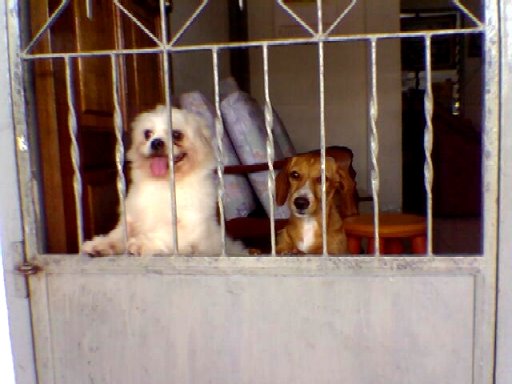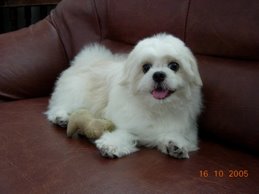What To Do With Dog Dragging Hind Leg
The presence of weakness in the hind limbs of pets can be accompanied by shortened nails, painful touch, poor lifting of the hips and legs could reveal conditions of the spine, muscle strain or nerve dysfunction. A dog dragging hind leg and bending toes or feet could signal degeneration, hip dysplasia, and injury to the tissues or nerves. Learning how to spot problems before it becomes excessive and difficult to manage.
When your canine companion appears to be moving normally one day and suffers lameness the next, it could reveal degeneration affecting the health of the spinal nerves. A disease, myelopathy, causes degeneration of the spine, affecting the normal function of the nerves and leaving the affected pet with limited movement or hind limb dragging. The spine is compromised leaving the back legs weak and difficult to move.
The presence of myelopathy does not have a positive prognosis and the rear legs will continue to drag and suffer lameness that leads to a state of complete paralysis. This disorder does not require surgery and is managed long term with vitamins and minerals. A certified veterinarian can advise on ways of strengthening the supporting tissues but cannot stop the progression of this disease.
Hip dysplasia is a common source of dysfunction causing difficult mobility and the abnormal swaying of the hips during movement. When a dog is impacted by these types of deformities, it can occur at any age and must be managed with rehabilitation and constant monitoring. To prevent symptoms from worsening over time, rehabilitation exercises are important and should be performed under the guidance and care of a professional animal therapist.
A cruciate ligament injury occurs when dogs are engaging in vigorous activity, jumping off the bed or simply make an improper move while playing. It causes instability in the knee causing poor movement and the drag of the affected rear leg. To improve the injury requires surgery as the ligament connecting to the knee joint is torn and must be reconstructed by a specialist vet.
All dogs can suffer from soft tissue sprains and strains that occur during jumps, an improper twist of the leg or a severe slip. When canines re affected by torn and sprained muscles, ligaments or tendons, the leg cannot function optimally and is best kept rested with the slow introduction of exercise. Applying cold packs to swollen limbs and ensuring that all canines are recovered fro the proper muscle problems can deliver exceptional results.
When dogs are ill or have suffered a severe poisoning, it could cause a system shut down and leave their rear legs to drag. If you notice signs of odd behavior including a lack of interest in food or regular activity, seek the assistance of a vet immediately. Many canines who are in the end stages of terminal disease including cancer could begin to drag their legs and feet.
You can examine the condition of the foot and leg to ensure stings or injuries are not causing the dog to limp or drag their legs. If you notice areas of tenderness, swelling or worsening of symptoms, it is time to contact a professional veterinarian. The proper techniques introduced by a specialist practitioner can facilitate the healing process and strengthen the limbs against disease and deterioration.
When your canine companion appears to be moving normally one day and suffers lameness the next, it could reveal degeneration affecting the health of the spinal nerves. A disease, myelopathy, causes degeneration of the spine, affecting the normal function of the nerves and leaving the affected pet with limited movement or hind limb dragging. The spine is compromised leaving the back legs weak and difficult to move.
The presence of myelopathy does not have a positive prognosis and the rear legs will continue to drag and suffer lameness that leads to a state of complete paralysis. This disorder does not require surgery and is managed long term with vitamins and minerals. A certified veterinarian can advise on ways of strengthening the supporting tissues but cannot stop the progression of this disease.
Hip dysplasia is a common source of dysfunction causing difficult mobility and the abnormal swaying of the hips during movement. When a dog is impacted by these types of deformities, it can occur at any age and must be managed with rehabilitation and constant monitoring. To prevent symptoms from worsening over time, rehabilitation exercises are important and should be performed under the guidance and care of a professional animal therapist.
A cruciate ligament injury occurs when dogs are engaging in vigorous activity, jumping off the bed or simply make an improper move while playing. It causes instability in the knee causing poor movement and the drag of the affected rear leg. To improve the injury requires surgery as the ligament connecting to the knee joint is torn and must be reconstructed by a specialist vet.
All dogs can suffer from soft tissue sprains and strains that occur during jumps, an improper twist of the leg or a severe slip. When canines re affected by torn and sprained muscles, ligaments or tendons, the leg cannot function optimally and is best kept rested with the slow introduction of exercise. Applying cold packs to swollen limbs and ensuring that all canines are recovered fro the proper muscle problems can deliver exceptional results.
When dogs are ill or have suffered a severe poisoning, it could cause a system shut down and leave their rear legs to drag. If you notice signs of odd behavior including a lack of interest in food or regular activity, seek the assistance of a vet immediately. Many canines who are in the end stages of terminal disease including cancer could begin to drag their legs and feet.
You can examine the condition of the foot and leg to ensure stings or injuries are not causing the dog to limp or drag their legs. If you notice areas of tenderness, swelling or worsening of symptoms, it is time to contact a professional veterinarian. The proper techniques introduced by a specialist practitioner can facilitate the healing process and strengthen the limbs against disease and deterioration.
About the Author:
If you are looking for information about dog dragging hind leg, come to our web pages online today. More details are available at http://www.canine-mobility.com/anti-knuckling-device now.
>














.jpg)






.jpg)

0 comments:
Post a Comment